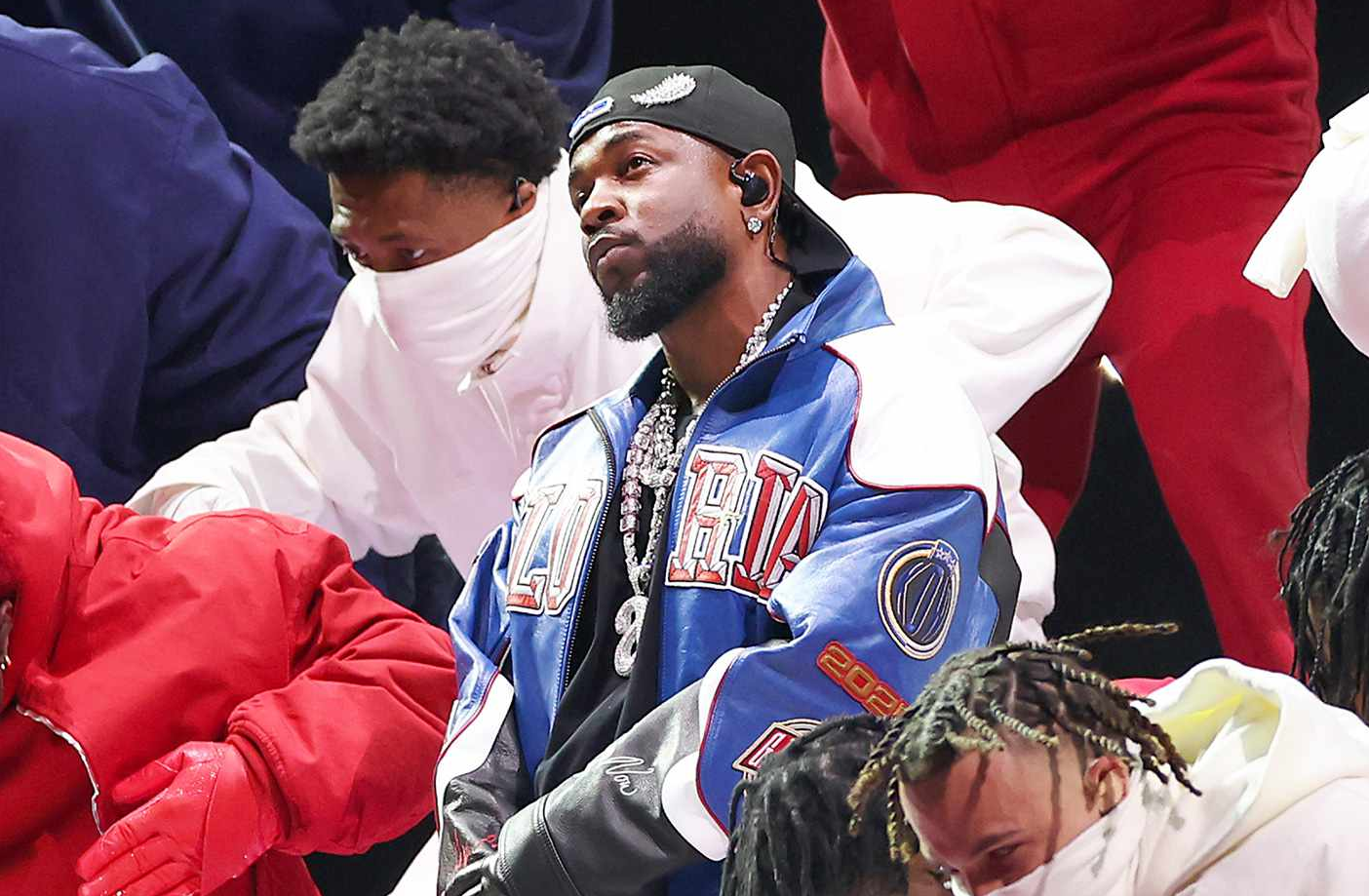It may come as a surprise, but despite the electrifying performance at Super Bowl LIX, Kendrick Lamar will walk away with exactly zero dollars in direct payment. The 37-year-old rap sensation headlined one of the year’s most-watched musical events at the Caesars Superdome in New Orleans, delivering a performance that will be remembered for years to come.
During the halftime show, Lamar was joined by longtime collaborator SZA, and the event even featured a special cameo from Samuel L. Jackson, adding an extra layer of star power. Fans across the nation were captivated as the duo lit up the stage with dynamic energy and unforgettable visuals. Yet, despite the high-profile collaboration and the dazzling production, Kendrick Lamar’s paycheck for the night is non-existent.
You might wonder, why would an artist of his stature perform for free? The answer lies in the incredible exposure that comes with performing at the Super Bowl. With an audience exceeding 100 million viewers worldwide, the halftime show is arguably the biggest stage in entertainment. The exposure alone has the power to boost music sales, streaming numbers, and overall brand visibility by astronomical margins.
Consider some past examples. After Rihanna’s Super Bowl performance in 2023, her Fenty Beauty brand reportedly amassed an estimated $88.3 million in media impact value within just 12 hours, while her Spotify streams surged by an astonishing 640 percent. Similarly, after Jennifer Lopez shared the stage with Shakira in 2020, she gained an extra 2.3 million Instagram followers, and Lady Gaga experienced a 1000 percent increase in album and song sales following her 2017 halftime act. These figures demonstrate that the value of such exposure far outweighs any immediate cash payout.
In the case of Kendrick Lamar, the NFL covers all production-related expenses. This includes travel, logistics, and even the payment of his crew according to the halftime performers’ union scale. A league spokesperson explained to The Independent that while the NFL funds every aspect of the show’s production, the artists themselves do not receive a traditional performance fee. This model is standard practice for Super Bowl halftime performances, where the real compensation comes in the form of immense exposure rather than direct financial remuneration.
Beyond the immediate benefits of media exposure and boosted streaming numbers, there’s another layer to this arrangement—the high production costs involved in putting together the halftime show. Reports suggest that the NFL, in collaboration with partners like Apple Music, allocates roughly $10 million to cover the expenses for the elaborate sets, cutting-edge special effects, and state-of-the-art audio equipment that transform the performance into a visual and auditory spectacle.
Interestingly, some artists even choose to invest their own money to enhance their performance. For example, it has been reported that Dr. Dre spent $7 million of his own funds during his 2022 halftime show, and The Weeknd reportedly did the same in 2021. These personal investments underline the confidence these artists have in the long-term benefits of a Super Bowl appearance.
Kendrick Lamar, known for his lyrical genius and profound influence on hip-hop, understands the significant impact that a Super Bowl performance can have on his career. While he may not be cashing a check directly from the event, the anticipated boost in his music’s streaming and sales numbers, combined with the surge in public interest, is expected to translate into a massive long-term benefit. His appearance at Super Bowl LIX is predicted to propel his songs back up the charts, attract a fresh audience, and ultimately solidify his impact within the music industry.
This strategy of performing for free is not unique to Kendrick Lamar; it is a calculated move embraced by many top-tier artists. The promise of reaching millions of potential new fans and reinvigorating existing listeners is a powerful incentive that often leads to a ripple effect in an artist’s career. The Super Bowl halftime show has proven time and again to be a launching pad for subsequent successes, making it a coveted opportunity despite the lack of a direct paycheck.
In conclusion, while Kendrick Lamar may not receive a cash payment for his Super Bowl LIX halftime performance, the intangible rewards—ranging from unprecedented exposure to a significant boost in music consumption—more than compensate for the lack of a traditional fee. The value of this opportunity is measured not in dollars, but in the long-term impact on his career and the enduring legacy of performing on one of the world’s biggest stages.

